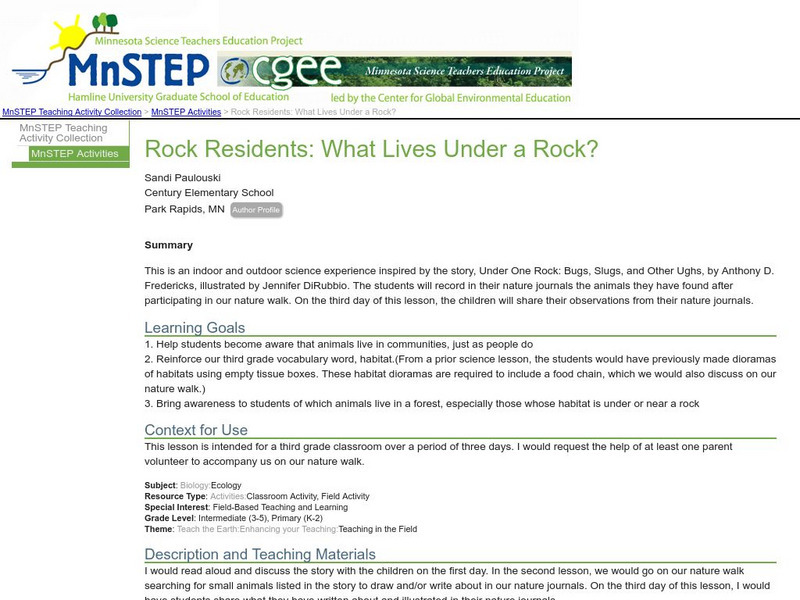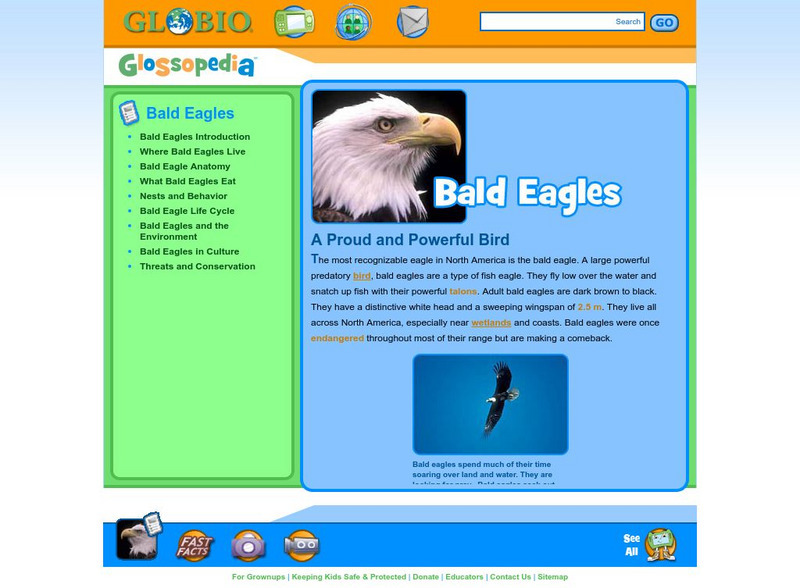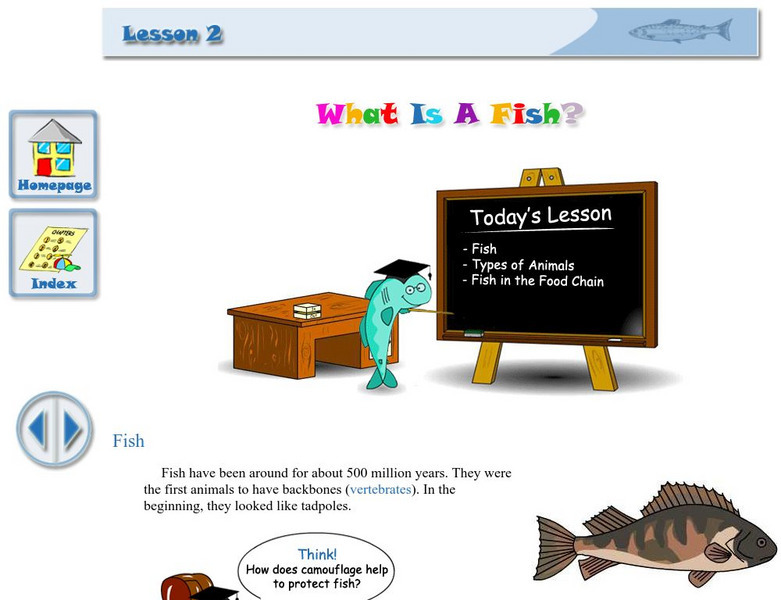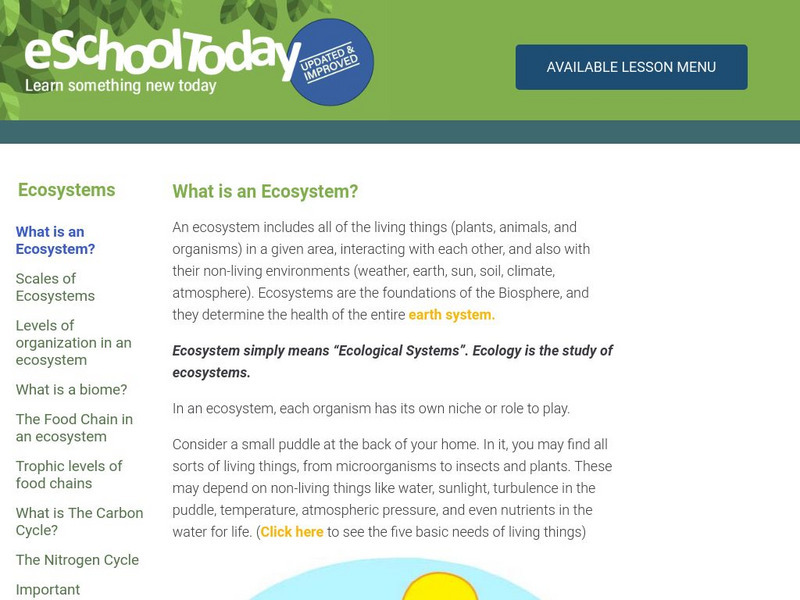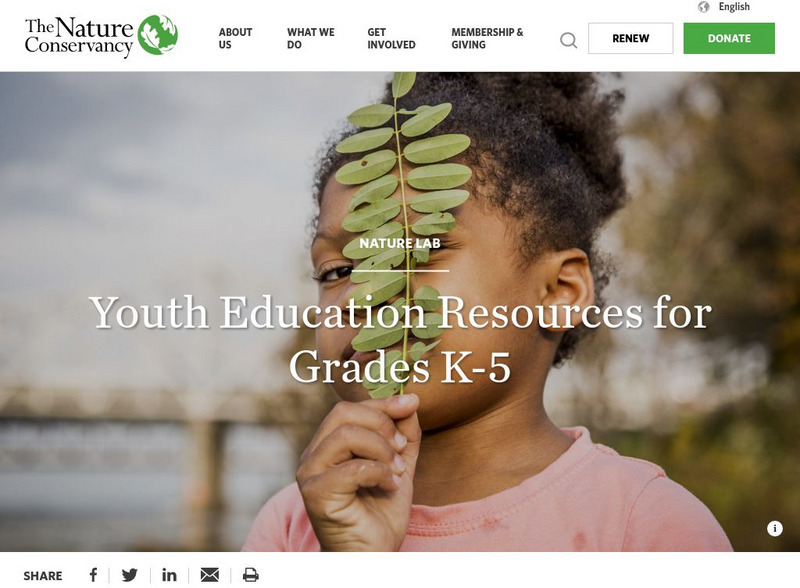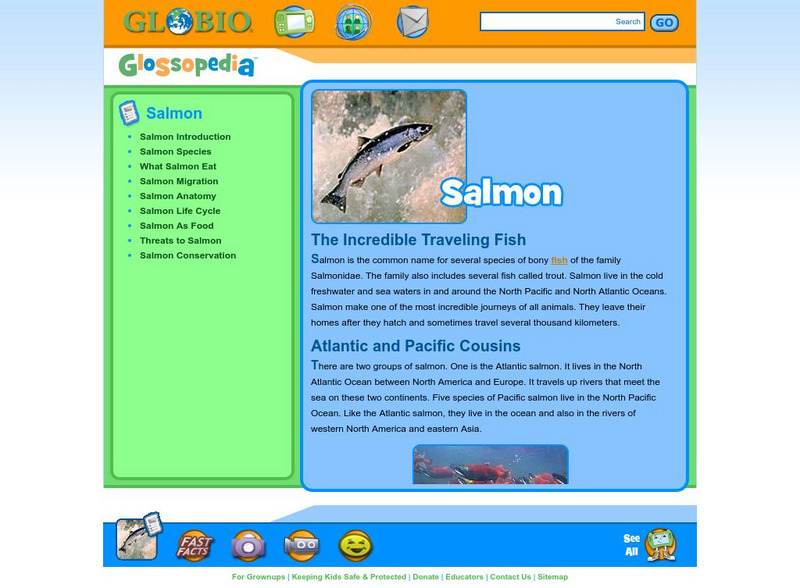BiologyWise
Biology Wise: Understanding the Process of Biological Magnification
Biological magnification is the term used to described the increasing accumulation of substances in organisms as one looks at higher trophic levels in a food chain. When that substance is a toxin, such as a heavy metal or a pesticide,...
Missouri Botanical Garden
Missouri Botanical Garden: Food From the Sea
Did you know that 80% of the fish we eat comes from the ocean? Since oceans cover so much of the earth you would think that we would never be in danger of running out of its resources. Learn how overfishing is causing many problems with...
Planet Pals
Planet Pals: Producers
This colorful site examines the food chain and delves into an explanation of what producers are and where they fit in an overall ecosystem.
Science Education Resource Center at Carleton College
Serc: Mn Step: Rock Residents: What Lives Under a Rock?
For this activity, learners first listen to a story about animals that live under rocks, then go on an exploratory nature walk to see what animals they can find, living in their own small habitats. They write about their discoveries in a...
Tom Richey
Slide Share: Ecosystems and You
Slideshow that looks at energy flow in an ecosystem. Explains what an ecosystem is, how energy flows through it, the producers and consumers of energy, and food chains. Links to a video about plastic debris in the ocean.
Texas A&M University
Texas A&m University: Fisheries Activities
Site from the Texas A&M University provides activities on fisheries that teachers can use in their classrooms to help students learn more about them. Some of the topics included are ecosystems, ocean food chains, fish prints and more.
Channel 4 Learning
Channel 4 Learning: Science Essentials: Habitats
Find answers to your questions about habitats, producers, consumers, and food chains. Glossary, image bank, suggested activities, and quiz included.
ClassFlow
Class Flow: Habitats
[Free Registration/Login Required] A 2nd grade unit on animal environments and habitats. Include web links for information on different land and water habitats, as well as a lesson on food chains.
BiologyWise
Biology Wise: A Brief Guide to the Steps of the Carbon Cycle
Outlines the steps for the movement of carbon along the carbon cycle through photosynthesis, food chains, being dissolved into the ocean, the decomposition of organisms, fossil fuel formation, industrial use of fossil fuels, carbon...
BiologyWise
Biology Wise: Facts About Autotrophs and Heterotrophs
Explains what autotrophs and heterotrophs are, the several types of each, their roles in an ecosystem's food chains, and the differences between them.
Mocomi & Anibrain Digital Technologies
Mocomi: What Is an Ecosystem?
Learn about ecosystems, how they work, codependency, and food chains.
PBS
Pbs Teachers:night Creatures of the Kalahari: Life in a Bottle
Understand that an ecosystem such as the Kalahari has a system of checks and balances to ensure that no species overpopulates and threatens the survival of other species. Chart a food chain and explore the balance between predator and prey.
Globio
Glossopedia: Bald Eagles
The bald eagle is a predatory bird that lives in North America. This article discusses bald eagle hunting habits, habitat, life cycle, diet, anatomy and mating habits. The concept of the food chain is introduced and is used to explain...
TeachEngineering
Teach Engineering: Biodomes
Students explore the biosphere's environments and ecosystems, learning along the way about the plants, animals, resources and natural cycles of our planet. Over the course of lessons 2-6, students use their growing understanding of...
NASA
Nasa Earth Observatory: What Are Phytoplankton? Fact Sheet
Learn about the characteristics of and different species of phytoplankton. Topics highlighted in this article include photosynthesis, global change, and the marine food chain.
Inland Fisheries Ireland
Something Fishy: What Is a Fish?
Something fishy site invites users to discover more about fish and fish types by learning how fish use their gills to breathe as well as where they fit in the food chain.
eSchool Today
E School Today: What Is an Ecosystem?
Learn about all the different levels of ecosystems, from the living things under a rock, up to a rainforest biome. Explains the levels of organization within an ecosystem, the different types of biomes, food chains and trophic levels,...
Nature Conservancy
The Nature Conservancy: Gardens Activity Guide: Soil
In this lesson students conduct a soil analysis to understand soil types and explore the relationship between the garden and healthy, fertile soil. Soil is a natural resource that is crucial to life on Earth and when managed properly, it...
TED Talks
Ted: Ted Ed: A Guide to the Energy of the Earth
Energy is neither created nor destroyed - and yet the global demand for it continues to increase. But where does energy come from, and where does it go? This video examines the many ways in which energy cycles through our planet, from...
Globio
Glossopedia: Salmon
This article introduces various species of salmon, breaking them into two groups - Pacific and Atlantic Salmon. Salmon habitat and life cycle are described. Concepts of spawning and food chain are explored. The issues of human activities...
CK-12 Foundation
Ck 12: Biology: Science of Ecology Study Guide
Review ecology, the study of how living organisms interact with each other and their surrounding environment.
TeachEngineering
Teach Engineering: Got Energy? Spinning a Food Web
Students learn about energy flow in food webs, including the roles of the sun, producers, consumers and decomposers in the energy cycle. They model a food web and create diagrams of food webs using their own drawings and/or images from...
CK-12 Foundation
Ck 12: Episd: Food Webs
[Free Registration/Login may be required to access all resource tools.] A close look at how animals and the environment interact with one another and specifically how the feeding relationships in a food web.
NOAA
Noaa: Estuaries 101 Curriculum: Estuary Food Pyramid
Students learn about the feeding relationships in an estuary ecosystem with this interactive energy pyramid activity. A second activity involves research and a video clip to elaborate the learning.
Other popular searches
- Desert Food Chain
- Animal Food Chain
- Deciduous Forest Food Chains
- Pond Food Chain
- Ocean Food Chain
- Frog Food Chain
- Food Chains in Biomes
- Arctic Food Chain
- Desert Animal Food Chain
- Ocean Animals Food Chain
- Coral Reef Food Chain
- Marine Science Food Chain





